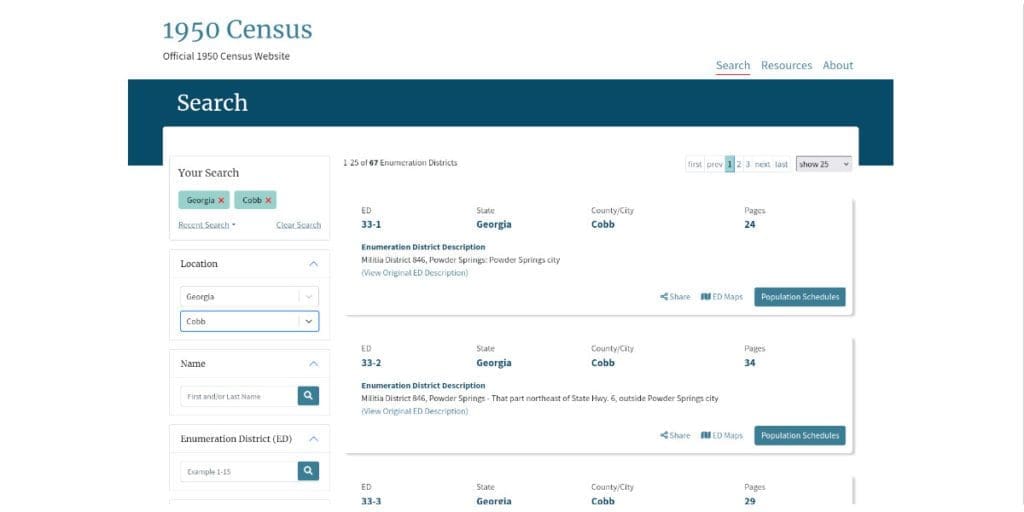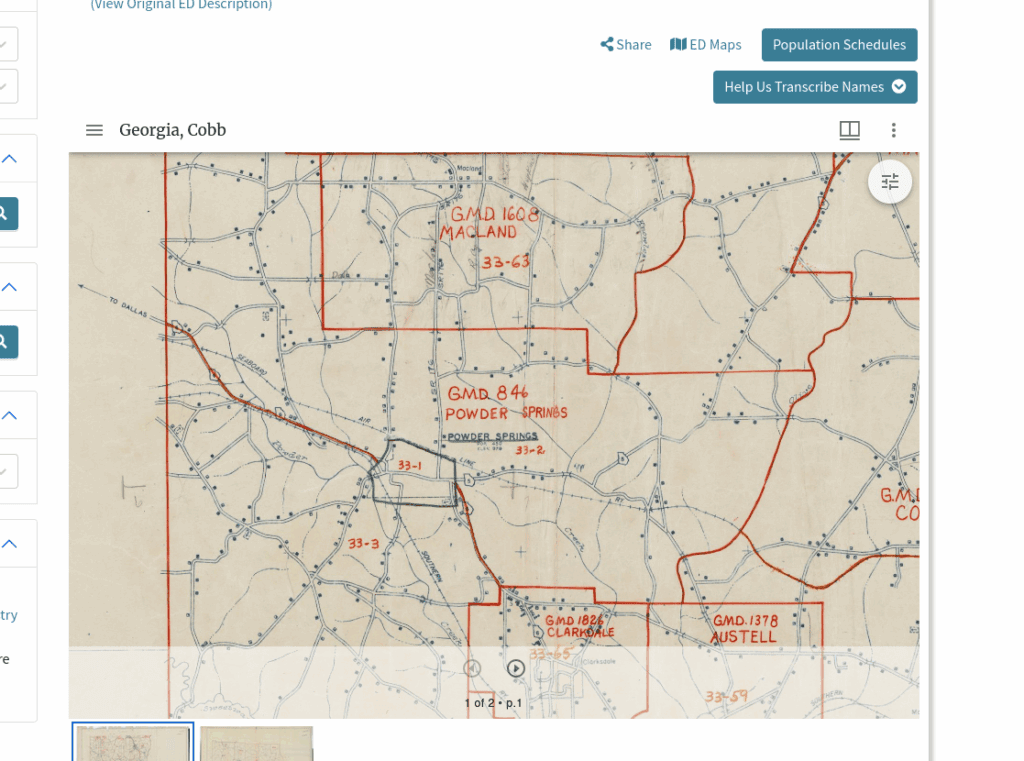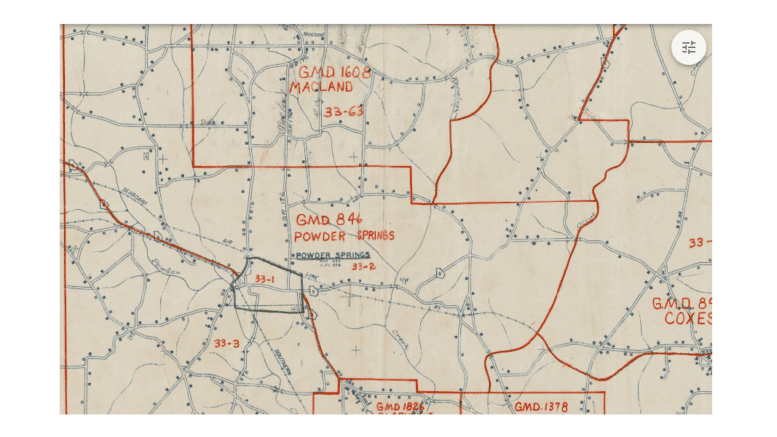Here’s a guide to using the online 1950 individual census records for Powder Springs, Georgia that were released a few years ago. These records are useful for both genealogy and historical research, for determining where individuals lived in 1950 and who they were living with.
Those of you who do genealogy or local history research are probably familiar with the individual census records. They are the reproduction of the handwritten sheets created when the census for a particular year was first conducted.
In a previous article, we looked at the release of the complete individual records for the 1950 decennial census. By federal law, detailed census records for individual households can’t be released until 72 years after the census. The detailed records are the handwritten standardized forms familiar to genealogists and historians.
Now we’re focused on how to get at the records for each part of the county. This article is primarily intended to provide readers with a way to look further into what Powder Springs looked like at the time of that census and to offer guidance on searching for family members or other people being researched, rather than to provide an in-depth statistical or demographic analysis of the area.
Here’s an image of the 1950 census map of Powder Springs (I’ll show you how to get to an interactive version of the map later in the article):

The county was divided into enumeration districts by the U.S. Census Bureau. To look at the records from all areas that are considered Powder Springs on today’s maps, you’ll need to look at districts 2, 3, 1, and 63
An explanation for how to get to those enumeration districts is reprinted below from our earlier article.
How to get to the 1950 census records
To get to the records, you can go to the search page at the National Archives by following this link, then hitting the “Begin Search” button, and on the left-hand panel selecting “Georgia” and “Cobb County” under the state and county pull-down.
Or more quickly, you can go there via this link to the search that I’ve already done.
Cobb was divided into 67 enumeration districts in 1950, so you’ll be presented with a screen with a number of records. Some of them will have recognizable names (Powder Springs is listed) but if you’re looking for an area that was unincorporated, it might have nothing more than a militia district.
At this point unless you’re familiar with historical geographies like the militia districts, you might have to muddle around a little to find the area you’re looking for, so clicking on the button marked “ED Maps” will give you an interactive map that is helpful in finding what you are looking for.
But for a simple example, let’s imagine I’m researching Powder Springs. I scrolled down to it, clicked on “Population schedules,” and came to this screen:

You can also get to a map of the enumeration district to make certain that if you’re searching for an individual you aren’t outside the boundaries of where that person lived.
You’ll have to use your mouse or key commands to pan around on the map and zoom in or out, but here’s what I got for the Powder Springs and Macland area.

How to use these records to build a more complete picture of Powder Springs in 1950
Finding the records is just a first step. The Census Bureau is getting volunteers to transcribe the records for different areas so that the records are searchable and more easily readable. To learn how to help with this project follow this link.
